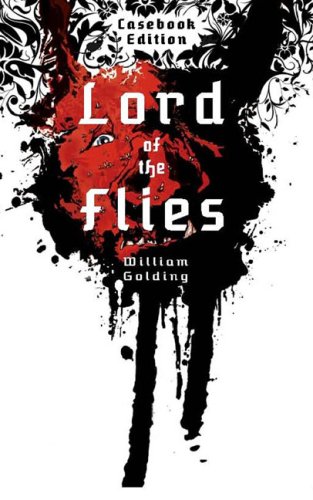All Nonfiction
- Bullying
- Books
- Academic
- Author Interviews
- Celebrity interviews
- College Articles
- College Essays
- Educator of the Year
- Heroes
- Interviews
- Memoir
- Personal Experience
- Sports
- Travel & Culture
All Opinions
- Bullying
- Current Events / Politics
- Discrimination
- Drugs / Alcohol / Smoking
- Entertainment / Celebrities
- Environment
- Love / Relationships
- Movies / Music / TV
- Pop Culture / Trends
- School / College
- Social Issues / Civics
- Spirituality / Religion
- Sports / Hobbies
All Hot Topics
- Bullying
- Community Service
- Environment
- Health
- Letters to the Editor
- Pride & Prejudice
- What Matters
- Back
Summer Guide
- Program Links
- Program Reviews
- Back
College Guide
- College Links
- College Reviews
- College Essays
- College Articles
- Back
Lord of the Flies by William Golding
William Golding's Lord of the Flies is a timeless book packed with symbolism and insight into the darkest depths of human instinct. It explores the fundamental aspects of evil, and the impulses that may cause people to generate violence that they never knew they were capable of. This alone is an impressive topic to cover in a mere 208 pages, but Golding doesn't stop there. Lord of the Flies is crammed with symbolism, including many interesting parallels to the Bible. To fully understand all the complex analogies, the novel must be read many times. However, there are numerous equivalences that can be seen at first glance.
Foremost, the island where the boys' plane crashes represents Eden. It is a pristine and unspoiled place until humans arrive and corrupt it with their barbarity. In the beginning, it seems like the island and the boys might be able to work in harmony, but that is unfortunately not the case. As a matter of fact, by the end of the book the whole land mass is up in flames due to savage human instincts.
In terms of people, Simon is definitely the most obvious Biblical parallel in the novel. He represents a Christ-like figure, saintly and selfless. From early on in Lord of the Flies, he helps the littluns by finding fruit for them. Simon continues to show his altruistic characteristics throughout the book, until he is met with the island's version of a crucifixion.
In my opinion, the most significant Biblical analogy occurs when Simon has a conversation with an impaled pig's head in the forest. Supposedly, this encounter represents Jesus' confrontation with the Devil during his 40 days in with wilderness. As Simon speaks with the pig's head which manifests itself into the Lord of the Flies, his beliefs that the Beast is nonexistent are confirmed. To be more specific, he realizes that the Beast is not a creature, but something that lives inside all of the boys. The Lord of the Flies says to him “I'm the Beast… Fancy thinking the Beast was something you could hunt and kill!” (page 143).
To add on even more Biblical symbolism to Simon's encounter, one must remember how the Devil was originally created. God sent one of His most prized angels down to Hell to keep guard, but that angel ended up turning into the Devil. This fact basically expresses the whole theme of Lord of the Flies. All people have an evil that resides within them and, given the “right” situation, they may become cruel and violent in ways they never expected.
Of course, all of these comparisons just scratch the surface of what Golding managed to encompass in his classic novel. Lord of the Flies is a well written adventure story, but it's more than that. It's a book that communicates the universal topic of morality, exploring what's right and wrong and how humans act when faced with challenging circumstances. I applaud Golding's ability to do this, and I'm sure that his story will not soon be forgotten.
Similar Articles
JOIN THE DISCUSSION
This article has 0 comments.

